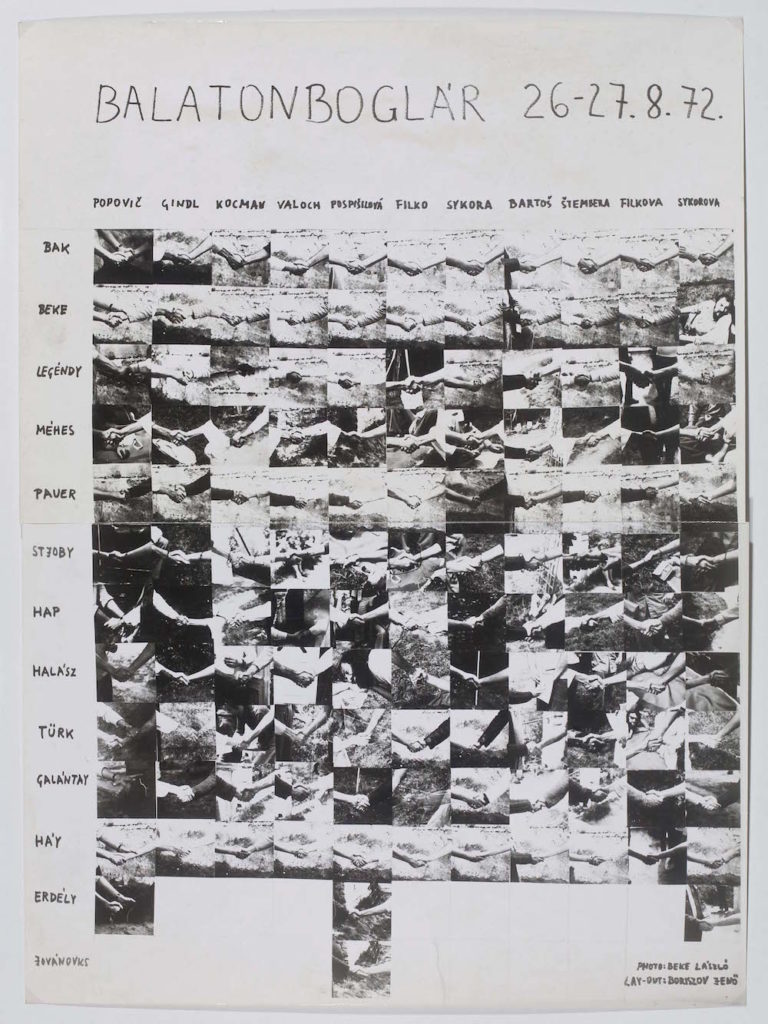Opinion
In Cold-War Hungary, Handshakes Were an Art Supply
THE DAILY PIC: In the Hungarian show at Elizabeth Dee, László Beke bills artists' connections as the true stuff of art.

THE DAILY PIC: In the Hungarian show at Elizabeth Dee, László Beke bills artists' connections as the true stuff of art.

Blake Gopnik

THE DAILY PIC (#1798): This is another image from Elizabeth Dee’s fascinating show of Hungarian art during the Cold War. It is by László Beke, better known as a curator and writer, and the title pretty much explains it: Handshake Action, Meeting of Czech, Slovak and Hungarian artists, Chapel Studio of György Galántai, Balatonboglar, 1972.
There has always been plenty of talk about the importance of personal relationships and circles of trust under communist regimes: Your safety and spiritual health depended on them. I like how Beke’s image translates that social fact into the language of international conceptualism, turning circles of trust into a modernist grid. The potent emotions of personal relationships are graphed like scientific data, rigor replacing romanticism. And yet there’s a sense that Beke knows that this artistic rigor, like the rigor of Five-Year Plans and worker-productivity tallies, is a façade that hides a fraught and complex reality. These artists shaking hands are living in the Potemkin Village of art, which the state’s bulldozers could flatten at any moment. (Courtesy the artist, Elizabeth Dee New York, and Vintage Galéria Budapest)
For a full survey of past Daily Pics visit blakegopnik.com/archive.